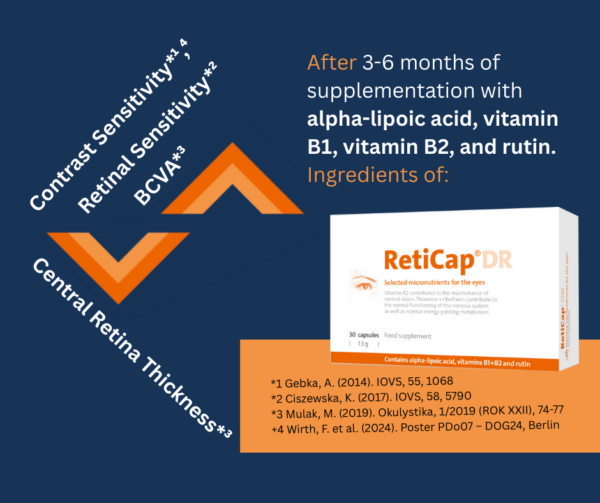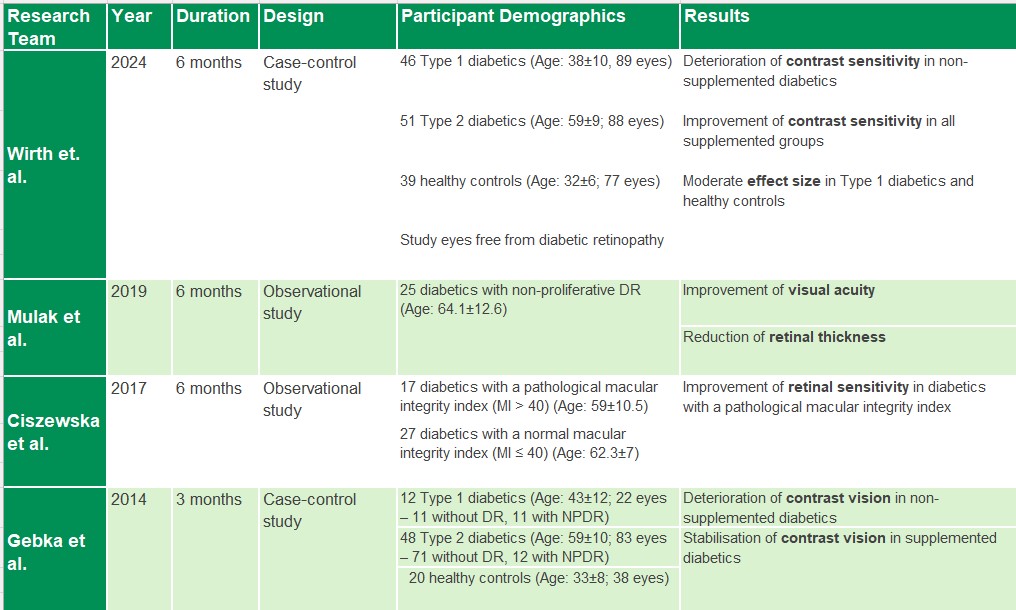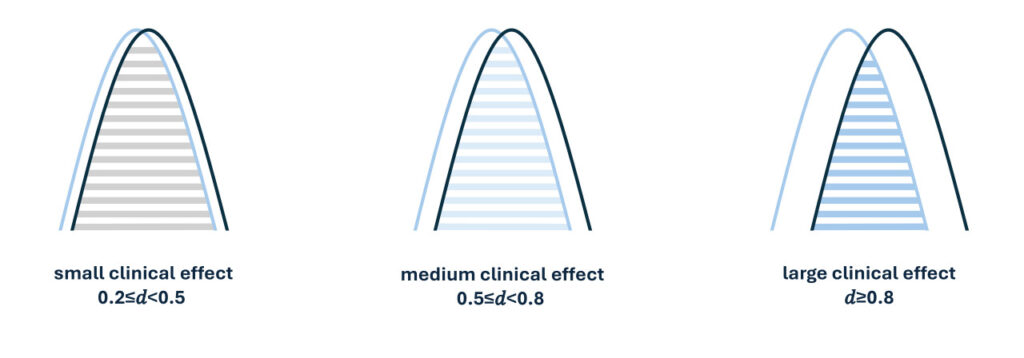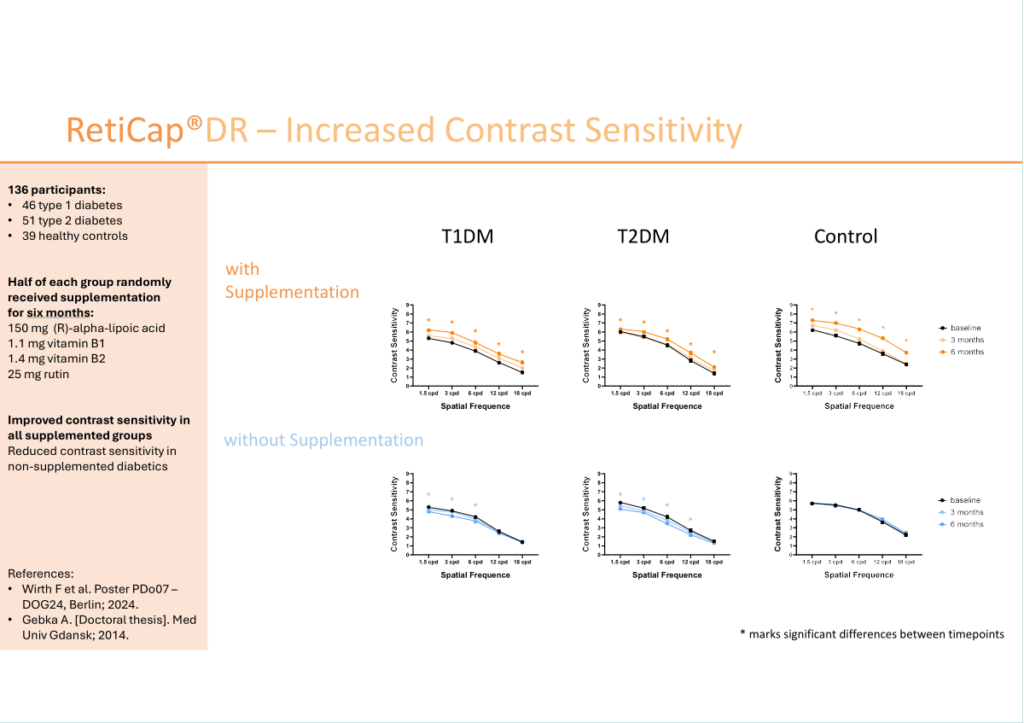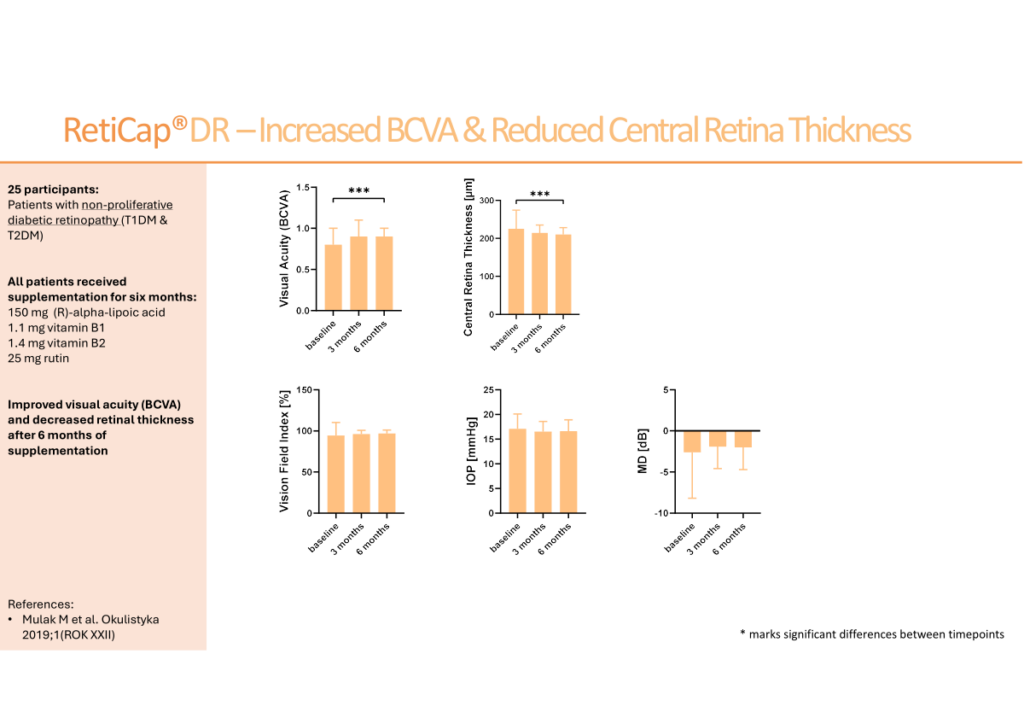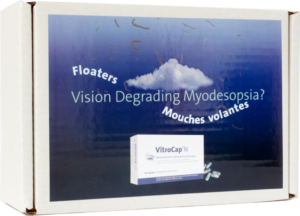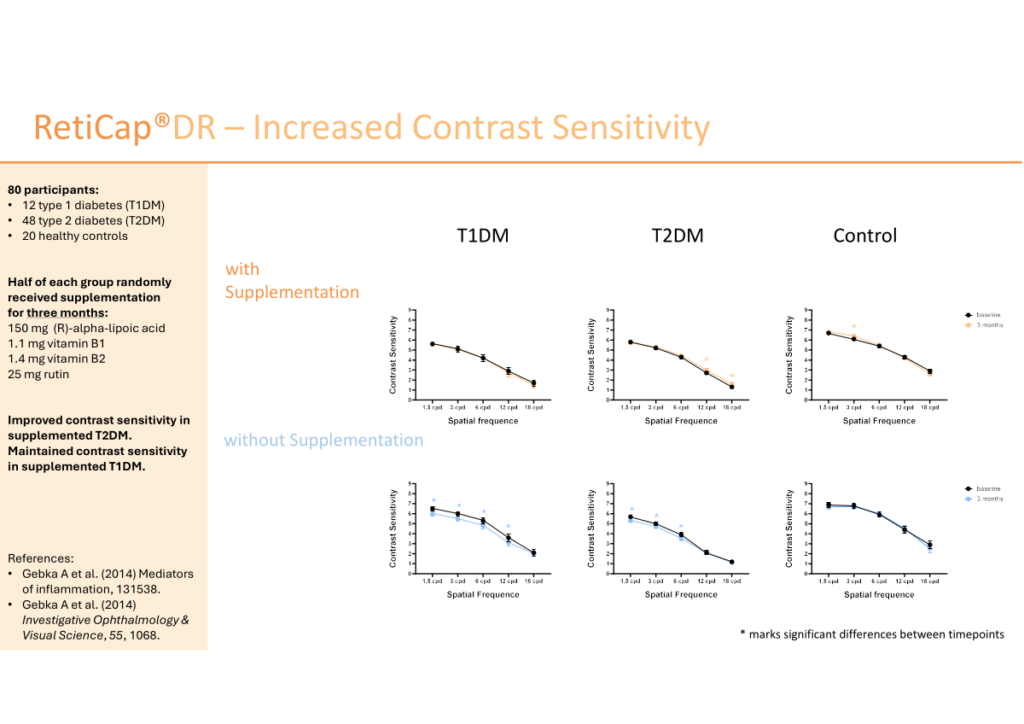Publication:
- Gebka, A., Serkies-Minuth, E., & Raczynska, D. (2014). Effect of the administration of alpha-lipoic acid on contrast sensitivity in patients with type 1 and type 2 diabetes. Mediators of Inflammation, 2014, 131538.
- Gebka, A., Serkies-Minuth, E., Raczynska, D., & Oseka, M. K. (2014). Effect of oral administration of alpha-lipoic acid, vitamin B1, vitamin B2, and rutoside on contrast sensitivity in patients with type 1 and 2 diabetes. Investigative Ophthalmology & Visual Science, 55, 1068.
⇓ DOWNLOAD PUBLICATION
Study Design:
As part of the randomised case-control study, the effects of a three-month dietary management plan with 150 mg R-α-lipoic acid (contained in 300 mg racemate), 1.1 mg vitamin B1, 1.4 mg vitamin B2, and 25 mg rutin on contrast vision in patients with type 1 and type 2 diabetes and healthy controls were investigated.
A total of 80 patients aged between 25 and 69 years were included in the study. Five type 1 diabetics (10 eyes), 28 type 2 diabetics (50 eyes), and 14 healthy participants (27 eyes) received daily supplementation over a 3-month period. At the same time, the control group—7 type 1 diabetics (12 eyes), 20 type 2 diabetics (33 eyes), and 6 healthy participants (11 eyes)—did not receive supplementation.
Contrast vision was quantified using the Functional Acuity Contrast Test (FACT, Stereo Optical) at various spatial frequencies (1.5, 3, 6, 12, and 18 cycles per degree [cpd]). Contrast sensitivity was assessed in steps of contrast level changes (0–9), corresponding to a logarithmic contrast sensitivity (logCS) of 0.15.
Contrast vision (CS) measurements were carried out under four lighting conditions (LC): 85.0 cd/m², 3.0 cd/m², 85 cd/m² with illumination of 135 lux/28 lux, and 3.0 cd/m² with illumination of 135 lux/28 lux.
Results:
In non-supplemented type 1 diabetics, a significant deterioration in contrast vision at spatial frequencies of 1.5 to 12 cpd was observed during the study. However, in T1DM patients who received supplementation for three months, no statistically significant change in contrast sensitivity was detected.
In non-supplemented type 2 diabetics, contrast vision significantly declined at spatial frequencies of 1.5 to 6 cpd after 3 months. In the supplemented T2DM group, contrast vision showed significant improvement at spatial frequencies of 12 cpd and 18 cpd.
Among healthy controls, contrast vision improved at a spatial frequency of 3 cpd following supplementation. Controls without supplementation showed no changes in contrast vision over the 3-month period.


